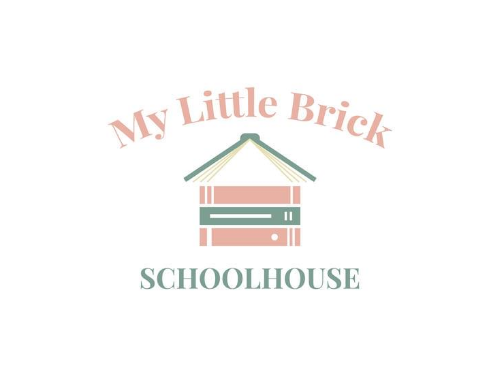Unit Study
What is a unit study as it relates to a classical education?

I am not an expert in unit studies. I did write a unit study in college, but that doesn’t make me an expert. Let’s just say I know the amount of effort involved in writing any curriculum. I am not sure where I stand on unit studies now, though at one point in time, I really loved them. The classical pundits do not completely regard unit studies as subpar. Susan Wise Bauer from The Well-Trained Mind explains some of the concerns she has about unit studies in her well-written, thought-provoking blogpost, Thoughts on Unit Studies.
According to Bauer, unit studies are generally topical, and tend to pull from random themes like “Little House on the Prairie”, turtles, Ancient Rome, breadmaking, etc. Some curricula center their unit studies around a character quality or literature classics. Beware of curricula who profess to be “classical”, when they are just using classic literature, but do not adhere to the tenets of a classical education. The three distinctives of a classical education are: follows the pattern of the trivium, is language-focused rather than image-focused, and is centered around the story of history.
The unit study is an integrative approach, where all subject areas are tied together in some fashion, as opposed to being taught in isolation. The classical approach to tying in the related content areas of history and literature make sense. If all content can be centered around the story of history, then the relationship between literature of a certain time in history and history itself is an obvious connection. I also learned from this article that the classical education will teach science alongside the time in history during which significant discoveries in that field of science were being made. For example, ancient history saw leaps and bounds in the fields of biology, classification and human anatomy. Medieval history correlates with discoveries in the fields of earth science and basic astronomy; early modern history discoveries in chemistry were well-known; and basic physics and computer science are considered part of very modern history.
At any rate, it is interesting and useful to approach unit study in a classical way, maybe even using a classical filter through which to view it. I don’t know, they are pretty fun, those unit studies! That’s why I did use what would technically be considered a unit study – Heart of Dakota’s Beyond Little Hearts for His Glory. It matches the criteria for classical education: it appeals to the developmental stage in the trivium (the grammar stage) for that age. For instance, BLH had them memorizing scripture through repetition and hand motions, which mirror a lot of the CC methods. In addition, they enjoyed and were working on reciting entire poems (although my six-year-old son rarely cared to memorize). The language arts component, copy work, is Charlotte Mason inspired, but is also utilized in memorizing sight words, which we used as our spelling portion. Suitable for the grammar stage? Yes! But I am not trying to fit something into a classical-sized hole just for the sake of it. I value what the Heart of Dakota emphasizes – learning through the story of history. Oh wait, that’s another classical characteristic! The site for BLH summarizes it well:
Making oiled paper as the early colonists did for use in their windows (right)
Travel to America, settle unfamiliar lands, and build a new nation alongside ordinary people who risked everything for freedom in Beyond Little Hearts for His Glory. Arrive in the New World on the Mayflower, enjoy Thanksgiving with Chief Massasoit, explore America with French trappers and traders, move to Philadelphia with the Quakers, cross the Blue Ridge Mountains with George Washington, stitch the American flag with Betsy Ross, carve out the Wilderness Road with Daniel Boone, travel west in a wagon train, and race with immigrants to build the Transcontinental Railroad. Through 34 exciting weeks of Beyond Little Hearts for His Glory, your children will see what life was like for young Americans, glimpse faith at work in times of trial, discover character qualities in Scripture, and hide God’s Word in their hearts!
The last aspect of a classical education, language-based over image-based is harder for me to support, since some of the BLH lessons had multi-sensory methods. For example, to memorize the scripture verse, one day you would have the kid hop on one foot and when I say “freeze!”, he stops to recite it. The next day, one would act out the scripture verse with hand motions to remember it better. The living books, amount of good reading and exposure to real literature (poems by timeless poets, Bible scripture, etc.) fit the bill for us. I found it exhilarating to learn beside my son this year. The grab-and-go plans that required everyday household items were a major plus for me, as well.
Book of Centuries
In our unit study and CC memory work, we added a lot to our Book of Centuries. A book of centuries is a timeline, in notebook form. Each two-page spread in the notebook (3-ring binder) is devoted to one century. Ours runs from 4000 B.C. to 2100 A.D. We downloaded it for free here. Keeping a book of centuries has helped us to keep in perspective the story of history, as each event is related to another. So far, our book of centuries spans early modern and modern history. To add to it, I simply write the year, followed by the event title. For example, “1624 – Dutch settle New Amsterdam”. Then, my son would draw a small cow in that place to represent the event. Flipping through its pages is like looking back over a photo album of old family and friends. Any unit study can have something cumulative like this, that centers around history.





